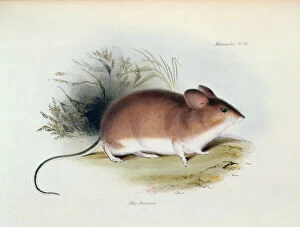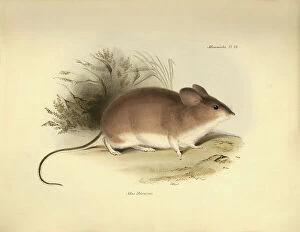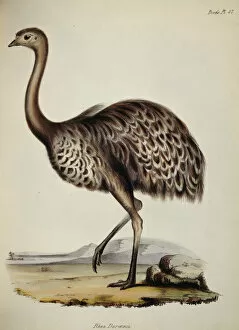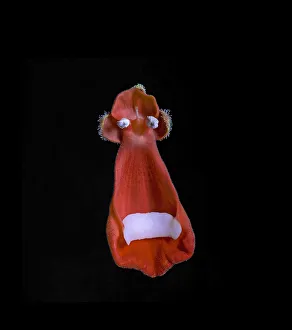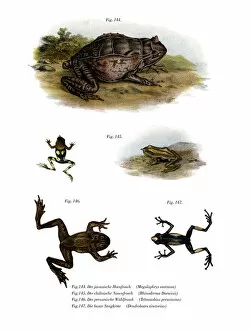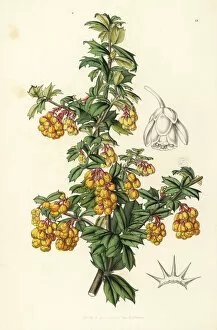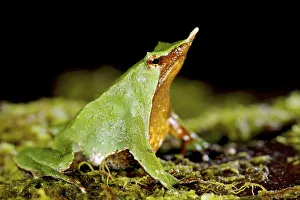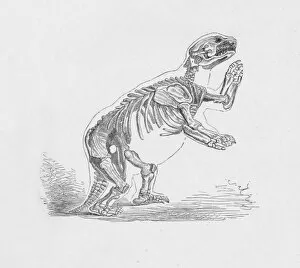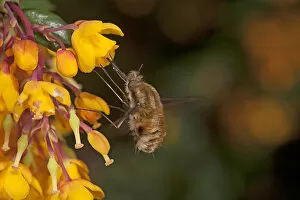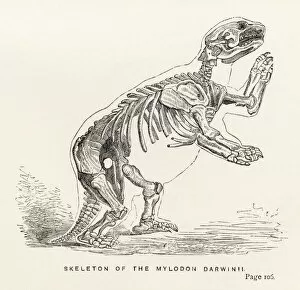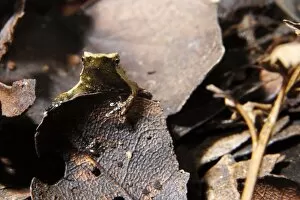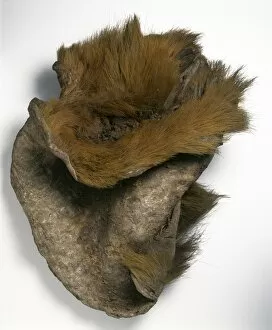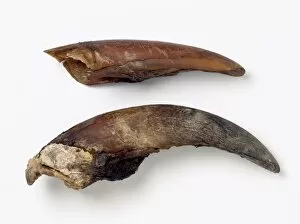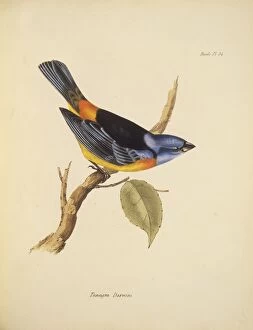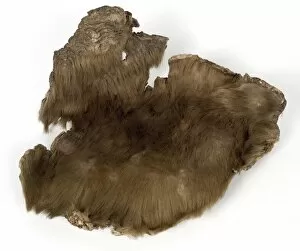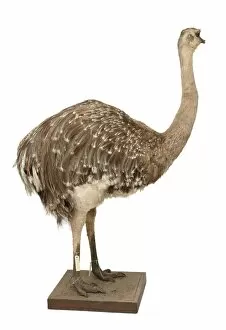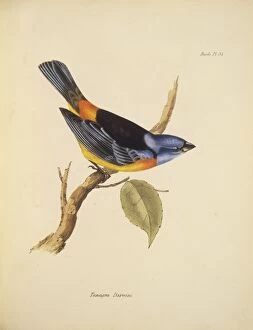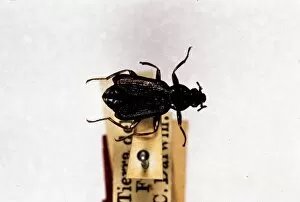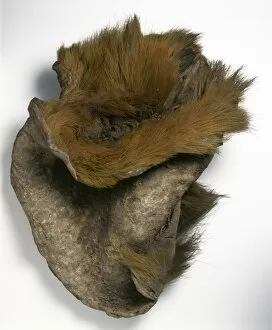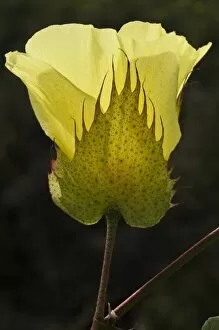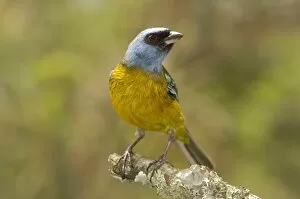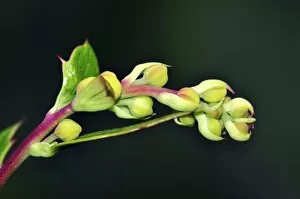Darwinii Collection
Darwinii is a genus of Mylodontidae mammals, commonly known as ground sloths
Choose a picture from our Darwinii Collection for your Wall Art and Photo Gifts
53 items
All Professionally Made to Order for Quick Shipping
-
Darwinii Collection
Darwinii is a genus of Mylodontidae mammals, commonly known as ground sloths. These animals lived in South America during the Pleistocene epoch and were among the largest land mammals of their time. They had long, curved claws on their front feet which they used to dig for food and to defend themselves against predators. Their diet consisted mainly of leaves, fruits, nuts, and other plant material. They were also known to scavenge carrion from time to time, well adapted for life in its environment with its large size providing protection from predators and its powerful claws allowing it to dig for food with ease. Its extinction is believed to have been caused by climate change at the end of the Pleistocene epoch as well as human hunting pressure.
+
Our beautiful pictures are available as Framed Prints, Photos, Wall Art and Photo Gifts
The Darwinii collection from Media Storehouse features a range of stunning wall art, framed prints, photo prints, canvas prints, jigsaw puzzles and greeting cards showcasing the Mylodontidae mammals. These animals are believed to have lived during the Pleistocene epoch and were native to South America. Our collection includes high-quality images of these fascinating creatures in their natural habitats, captured by skilled photographers. The Mylodontidae family included several species such as the ground sloth and glyptodont which were known for their large size and unique physical characteristics. The artwork in our collection is perfect for animal lovers or anyone interested in prehistoric life on Earth. Whether you're looking to decorate your home or office space with beautiful wall art or want to send a special message with one of our greeting cards, the Darwinii collection has something for everyone. With its wide variety of options available at affordable prices, it's easy to find something that suits your style and budget.
+
What are Darwinii (Mylodontidae Mammals Animals) art prints?
Darwinii art prints are a collection of high-quality prints featuring the Mylodontidae mammal animals. These mammals were native to South America and lived during the Pleistocene epoch, which lasted from about 2.6 million years ago until around 11,700 years ago. The Darwinii art prints showcase these fascinating creatures in their natural habitat, providing an insight into what life was like for them during this period. The Mylodontidae family includes several species of ground sloths that ranged in size from small to very large. They were herbivores and had unique adaptations such as long claws for digging up roots and tubers, as well as powerful jaws for grinding tough vegetation. These art prints are perfect for animal lovers or anyone interested in prehistoric creatures. They make great additions to any home or office decor and are sure to spark conversations about the amazing diversity of life on our planet.
+
What Darwinii (Mylodontidae Mammals Animals) art prints can I buy from Media Storehouse?
We offer a wide range of Darwinii art prints that are perfect for animal lovers and enthusiasts. These prints showcase the beauty and uniqueness of these prehistoric mammals, which were once found in South America. Some of the popular Darwinii art prints available on Media Storehouse include detailed illustrations of the animals, as well as photographs capturing their natural habitats and behaviors. The collection features both black-and-white and color prints, allowing you to choose one that best suits your style preferences. Whether you're looking for a print to decorate your home or office space, or simply want to add to your existing collection of animal-themed artwork, we have something for everyone. With high-quality printing techniques used on premium materials like canvas or paper, these art prints are sure to make a lasting impression on anyone who sees them.
+
How do I buy Darwinii (Mylodontidae Mammals Animals) art prints?
To purchase Darwinii art prints, you can visit our online marketplace. We offer a wide range of high-quality art prints featuring various animals and wildlife, including the Mylodontidae family. You can browse through our extensive collection of images and select the ones that appeal to you. Once you have chosen your desired print(s), simply add them to your cart and proceed to checkout. At this point, you will be prompted to enter your payment details and shipping information. We accept various payment methods such as credit cards, PayPal, Apple Pay, Google Pay, etc. After completing your order, Media Storehouse will process it promptly and ship it out to you within a reasonable timeframe. Their team takes great care in packaging their products securely so that they arrive at your doorstep in pristine condition. Buying Darwinii art prints from Media Storehouse is an easy and convenient process that allows you to bring beautiful animal artwork into your home or office space.
+
How much do Darwinii (Mylodontidae Mammals Animals) art prints cost?
We offer a range of Darwinii art prints at varying prices. The cost of these prints will depend on the size and type of print that you choose. We have a variety of options available including canvas, framed, and poster prints to suit your preferences. Our Darwinii art prints are high-quality reproductions of original artwork created by talented artists from around the world. These stunning pieces capture the beauty and majesty of these fascinating animals in intricate detail. Whether you're looking for a statement piece for your home or office, or simply want to add some natural beauty to your walls, our Darwinii art prints are an excellent choice. With their affordable pricing and exceptional quality, they make an ideal gift for any animal lover or nature enthusiast.
+
How will my Darwinii (Mylodontidae Mammals Animals) art prints be delivered to me?
Your Darwinii art prints will be delivered to you in a safe and secure manner. We take great care in packaging your artwork so that it arrives at your doorstep in pristine condition. Our team of experts use high-quality materials to ensure that your print is protected during transit. We offer a range of delivery options depending on your location, including standard and express shipping. You can track the progress of your order through our online tracking system, which provides real-time updates on the status of your shipment. Once you receive your artwork, we recommend handling it with care and framing it as soon as possible to protect it from damage or fading over time. Our prints are produced using archival quality materials to ensure longevity, but proper storage and display will help preserve their beauty for years to come. We hope that you enjoy your new Darwinii art prints and appreciate the effort we put into delivering them safely to you.

